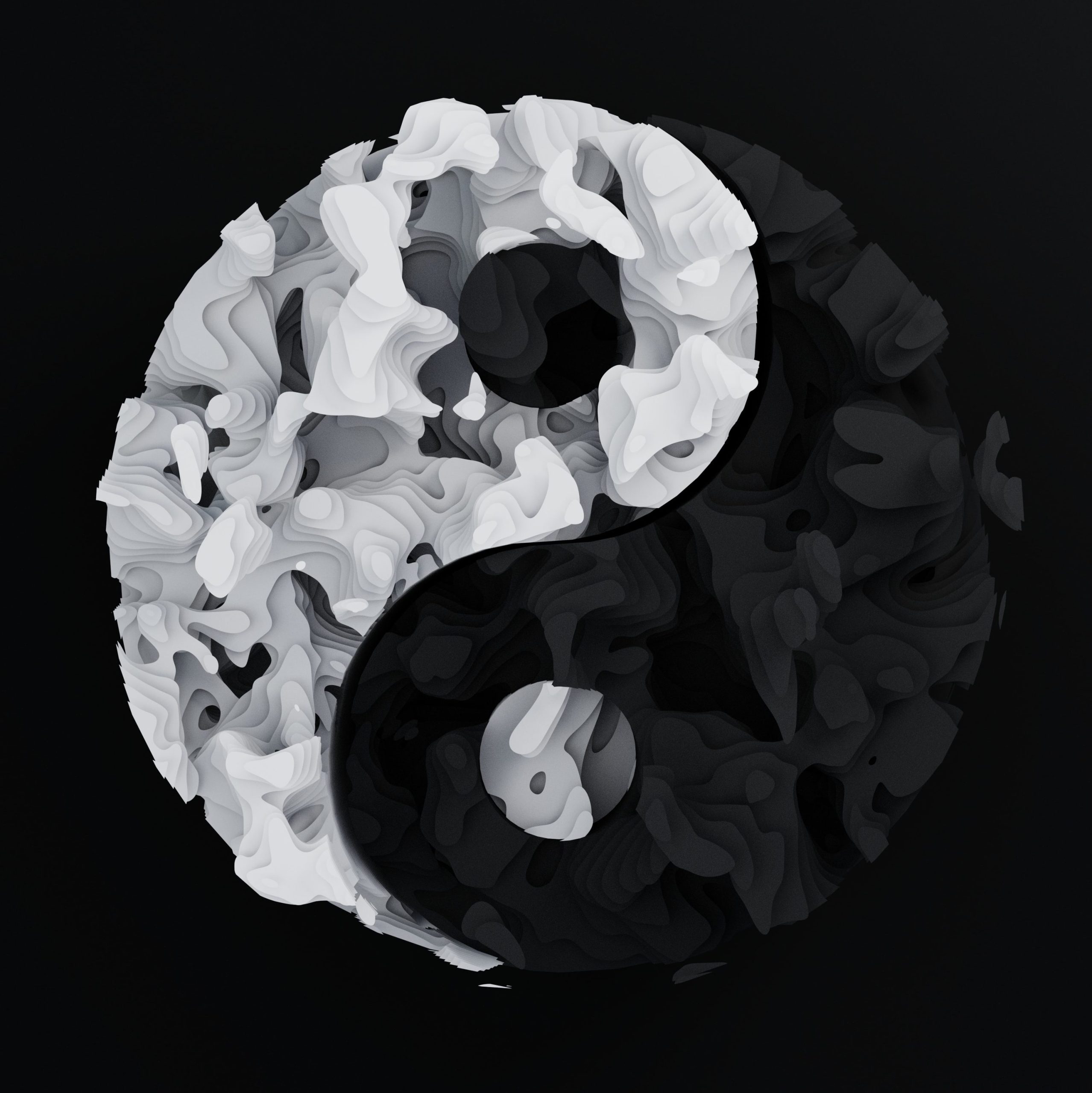Although these five fundamental Substances are central to understanding Traditional Eastern Medicine, one cannot comprehend them outside the framework of the theory of Yin-Yang. The theory of Yin-Yang holds that every object or phenomenon in the universe consists of two opposite aspects— yin and yang. They are not forces or material entities, nor are they mythical concepts. Yin and Yang are convenient labels used to describe how things function in relation to each other and the surrounding environment. They are also used to model and explain the continuous process of natural change.
The original meaning of yin is the shade of slope. The basic properties of yin simulate those of water, and include such attributes such as coldness, downward direction, and dimness, all of which are relational properties. Other yin characteristics include earth, female, night, inward movement, slowness, and relative stasis. The Chinese character yang originally meant the sunny side of a slope. The basic properties of yang simulate those of fire, and include such attributes as heat, upward direction, and brightness. Other yang properties include heaven, male, day, outward movement, rapidity, and relative activity.
Yin
- Water
- Coldness
- Downward Direction
- Dimness
Yang
- Fire
- Heat
- Upward Direction
- Brightness
Eastern medicine holds that every tissue and organ in the body can be understood in relation either to yin or yang depending on its relative location and function. In terms of location within or on the body, the front is considered yin and the back yang. The outer and upper parts of the body are more yang than the inner and lower parts. In terms of functions of the body heart, pericardium, lungs, spleen, liver, and kidneys are yin organs. The functions of these yin organs is to produce, transform, regulate, and store the five fundamental substances. The six yang organs are small intestine, large intestine, stomach, gall bladder, urinary bladder, and triple lumen. These yang organs receive, break down, and absorb that part of the food that will be transformed into the fundamental substances, and they transport and excrete unused portion of food.
The Eastern physician never loses sight of the fact that the yin-yang nature of any given tissue or organ is relative, not absolute. What is yin in relation to one thing may be yang in relation to another, and the entire yin-yang model is designed to encourage systemic or relational thought by the physician. For example, the front of the body is yin compared to the back. Yet chest is yang in relation to the abdomen.
The yin-yang theory is well illustrated by the traditional eastern Taoist symbol. The small circles of white in the black field and black in the white field suggest that within the yin there is yang and vice versa. The dynamic curve dividing them indicates that yin and yang are continuously merging. Yin and yang thus create each other, control each other, and become each other.

Yin & Yang
- Everything Contains Yin & Yang
- Yin can transform into Yang; Yang can transform into Yin
- Inseparable and interpenetrating relationship
- All things are balancing and rebalancing into a state of harmony
- Nothing is absolute
The basic principle of acupuncture holds that there is a constant exchange of Qi throughout the body by way of different acupuncture channels or meridians. These energy meridians make up an invisible network that links together all the fundamental substances and organs. They also connect the interior of the body with the exterior. Twelve major meridians correspond to each of the six yin and yang organs. The meridian system also has eight extra meridians and many small minor meridians (see meridian charts below). Meridian theory assumes that disorder within a meridian disturbs the functioning of the pathway, thus causing disharmony along that meridian. Once again, we see that meridian theory encourages the acupuncturist to think relationally. For example, an eastern physician might reason that a disorder in the stomach meridian has led to an upper toothache because that particular meridian passes through the upper gums. A lower toothache, on the other hand, might be the result of a disorder of the large intestine meridian.
While acupuncture is most frequently associated with pain control in the west, it has much broader applications in the hands of a well-trained practitioner. A skilled acupuncturist will use the needles to reduce what is excessive, increase what is deficient, warm what is cool, and cool what is hot, circulate what is stagnant, and stabilize what is reckless.
In 1997, the National Institute of Health published Consensus Statement summarized the state of knowledge drawn from clinical trial concerning acupuncture efficacy. The authors conclude that there were “promising results showing efficacy in adult postoperative and chemotherapy-induced nausea and vomiting and in postoperative dental pain.” The World Health Organization in 2003 published a report about clinical trials researching the effectiveness of acupuncture. More than 100 indications were discussed. Diseases, symptoms, and conditions for which acupuncture has been proven to be effective treatment include addiction problems, adverse reactions to chemotherapy and radiotherapy, allergic rhinitis, bell’s palsy, biliary colic, depression, dysmenorrhea, epigastric pain, facial pain, fibromyalgia, headache, essential hypertension, induction of labor, knee pain, low back pain, neck pain, morning sickness, shoulder pain, rheumatoid arthritis, renal colic, sciatica, sprain, stroke, and tennis elbow.
